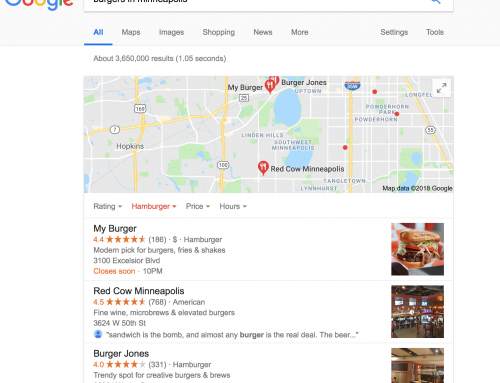TURNING HITS TO VIEWS TO SALES
PART II
“Content is king.”
Content is king is a little vague. Why is content king? What is it king of? Content is king over the kingdom called the “World Wide Web”. Content is king because, when created and implemented correctly, it becomes the fly in the web that calls the spiders to come in closer. You want the spider to find your fly, your content. In order to master the web, you must master its rulers. To master its rulers, you must serve them. It may sound kind of crazy, but follow along with me for a minute.
SPIDERS AND FLIES
“Stop Writing about everything. So many brands create content and try to cover everything, instead of focusing on the core niche that they can position themselves as an expert around. No one cares about your special recipe… Find your niche, and then go even more niche.“
– Joe Pulizzi, founder Content Marketing Institute
The web is filled with hungry spiders. They will eat. But what will they consume? You want it to hear and see you. In order to be heard and thus seen, you will want what the spider wants, an appealing pallet of information relevant to its appetite—whatever its users are searching for on the search engine. Therefore, you want to know the individuals who are searching for what you have to offer and you will want to dress your fly up to attract them. Once your fly is ready to be found, you send it out to “hit” the web and draw the spider’s attention. Each item on your page that can be a hit will need to be prepared to shake the web and attract the spiders.
DRESSING UP YOUR FLY: THREE SEO TECHNIQUES
The top three SEO techniques that are trending today can be boiled down to the word CAB:
- Content
- Audience Needs
- Backlinking
As mentioned above, content is king. Content is a broad term and can include infographics, blogs, eBooks, white papers, videos, reviews, and much more. Key to creating content, you will want to begin with knowing your audience.
AUDIENCE NEEDS: IMAGES
To optimize your site, you will want to add the right items, or hits, to each page. This includes words and images. Both can attract web searches to your content. Millennials will likely open pages that have pertinent memes. Gamers will want to see interesting pictures of particular games or technology. Someone searching for auto parts may be looking for a picture of a particular vehicle or a video of how to complete the work. Your field will affect what images your audience will search for.
Make sure you attach words to the images you add into your content.
“I deal with a lot of “visual” content, from infographics to videos, and I often see people posting this visual content with no actual text on the page to go along with it. Although a good graphic will tell a story visually to keep people engaged, you still need to include accompanying text content to help the search engines know what the graphic is about.”
–Matt Stilata, President of Avalaunch Media
CAB Solution: Create Effective Content With Properly Labeled Images
Simply adding anchor text to your images and using your keywords can help the spiders find your content.
- Use your knowledge of your market to integrate helpful phrases or search words to the image.
- Select images that will attract users for your particular product.
- Limit the image content; Clutter is a killer (Varies by audience)
- Limit the quality of the image to keep search speed (max 70kb)
- Give your image a strategic file name for web searches
As you create unique images and audience driven content, you should see a growth in organic backlinking. Share your content on social media and through trusted contacts that are already viewed as reliable. These will usually be people that you know and trust yourself. As you present yourself as an authority in the market, building in links from other authorities in the market, you will see an increase in your site visits that can generate from having the right elements in your content, “hits”, that drive potentially profitable traffic to your business.
For additional descriptions and generally helpful advice and image quality comparisons, check out this blog at shopify.com.
To access the other articles in this series, use the links below:
TURNING HITS TO VIEWS TO SALES PART I: HITS
TURNING HITS TO VIEWS TO SALES PART III: CREATING ORGANIC BACKLINKS
TURNING HITS TO VIEWS TO SALES PART IV: METRICS PROVE YOU NEED A CONTENT STRATEGY




